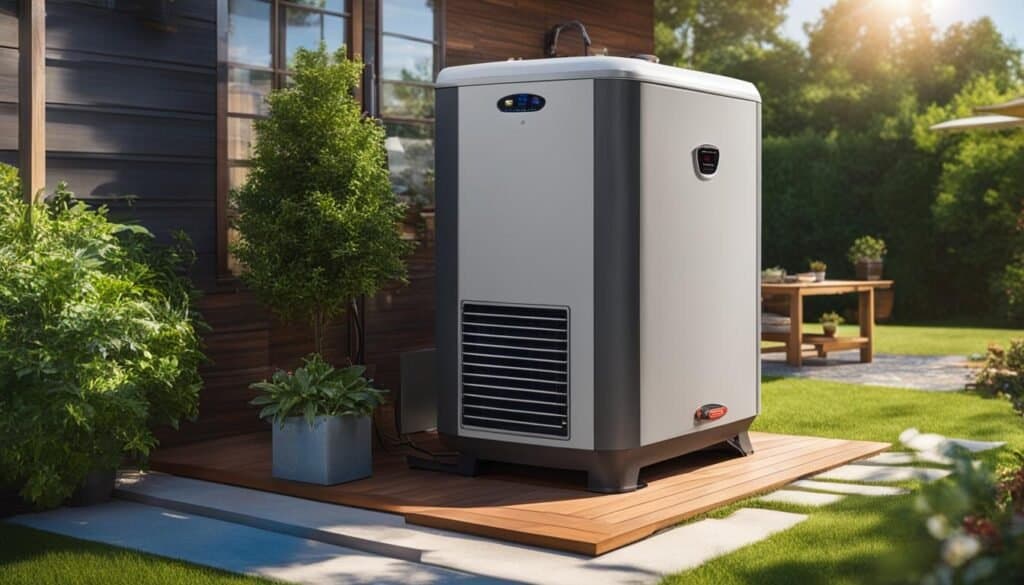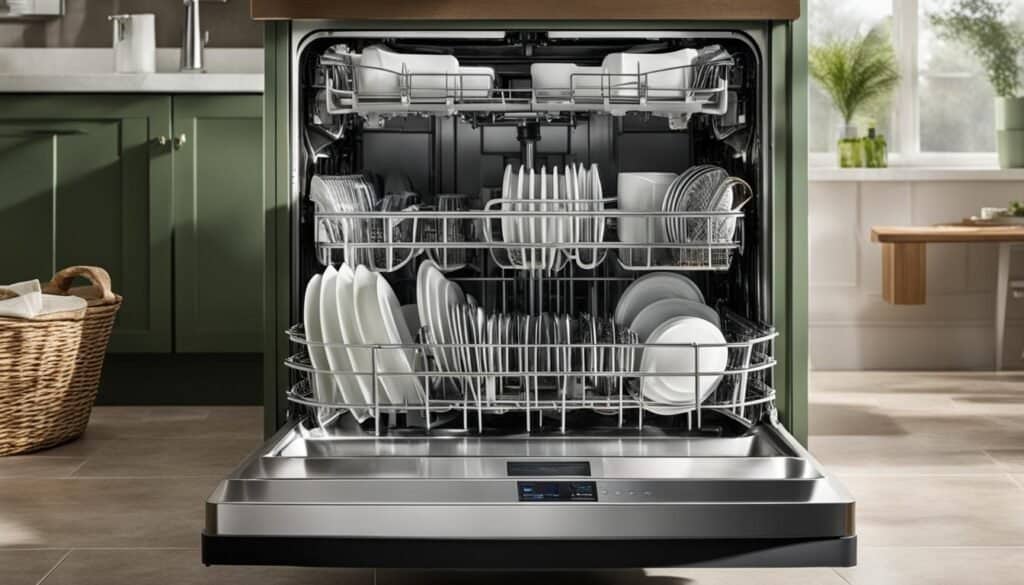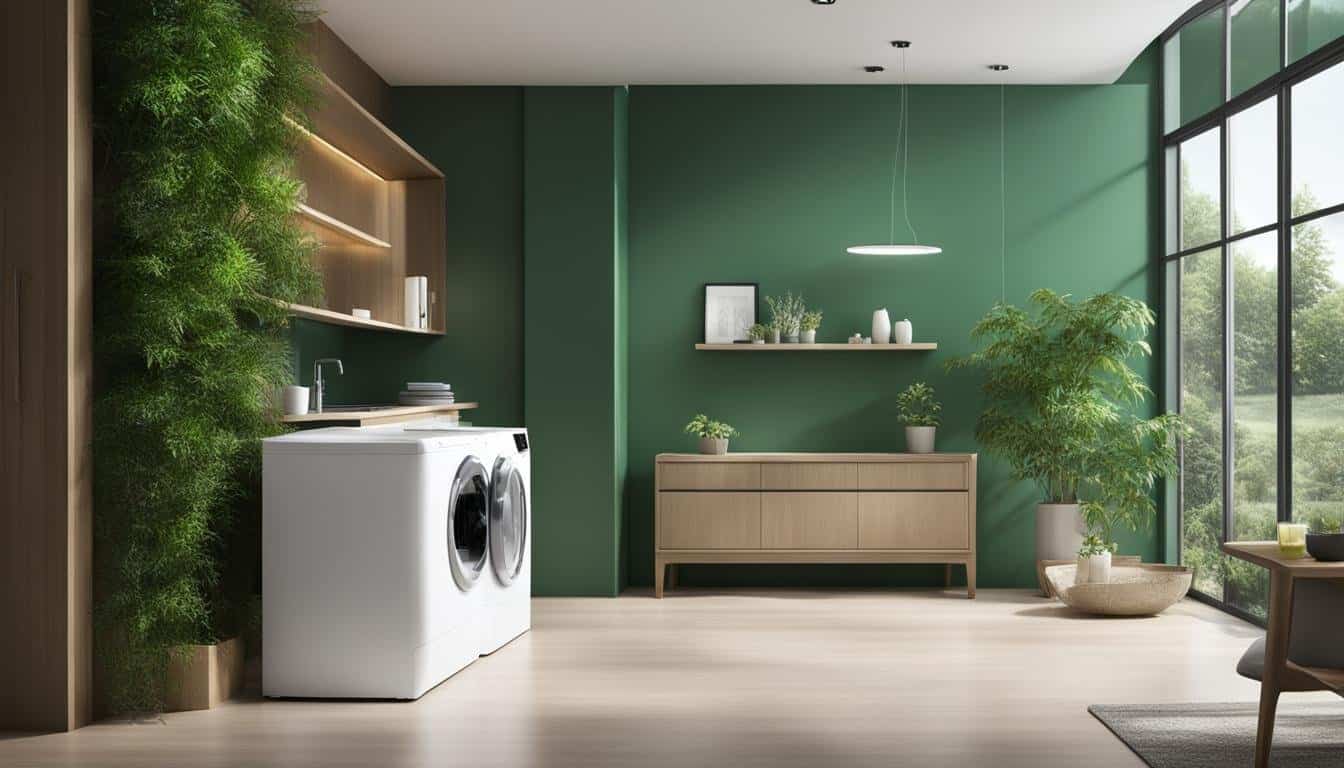As a homeowner, I’m always on the lookout for ways to improve my humble abode. Lately, I’ve taken a keen interest in energy-efficient home upgrades that not only help save the environment but also benefit my pockets in the long run. In our ever-evolving world, it’s crucial for sustainability and greener living to take center stage, and I firmly believe that embarking on these environmentally-friendly home improvements is the key to a brighter, cleaner future for all.
Key Takeaways
- Energy-efficient upgrades can improve a home’s market value and sale potential
- Options like Sealed offer flexible payment plans for eligible energy improvement projects
- Smart thermostats, solar panels, and heat pump water heaters are just a few energy-saving technologies available
- Efficient appliances promote utility bill reduction and minimize ecological impact
- New home energy innovations continue to emerge, setting the stage for greener living
Best 10 Energy Efficient Home Appliance Upgrades
Here is a summary of the top 10 energy efficient home appliance upgrades for a greener future:
The Value of Energy Efficiency in Today’s Home
The value of energy efficiency in contemporary homes extends beyond cost savings to encompass improved comfort and indoor air quality, as well as enhanced marketability. As utility costs rise and climate patterns change, energy efficiency becomes a compelling feature for homeowners, not only in the improvement of living standards but also as a selling point.
Today’s homeowners are becoming increasingly aware of the importance of specialized upgrades like professional air sealing and insulation, which address key energy waste issues and can lead to significant return on investment (ROI) when the home is sold.
For instance, energy-efficient improvements such as updated attic insulation can offer over a 100% return on investment. Moreover, new homebuyers are increasingly seeking homes that have energy-saving features, providing a significant market advantage for properties boasting cutting-edge technology. This is particularly imperative given that energy use per household has been on a constant rise since the 1980s.
As utility costs rise and climate patterns change, energy efficiency becomes a compelling feature for homeowners, not only in the improvement of living standards but also as a selling point.
Let’s take a closer look at the top 3 energy-efficient upgrades that have the potential to maximize ROI and greatly enhance your home’s marketability.
- Energy-efficient windows
- LED lighting
- Smart thermostats
The table below showcases the average return on investment for these upgrades, illustrating their importance for long-term value appreciation:
| Energy-Efficient Upgrade | Average ROI |
|---|---|
| Energy-efficient windows | 75% – 90% |
| LED lighting | 50% – 70% |
| Smart thermostats | 65% – 80% |
Thus, investing in energy-efficient upgrades not only helps to lower overall energy costs and promote environmentally sustainable living but also improves the long-term value and marketability of a home. Integrating these improvements with smart appliances and systems empowers homeowners to realize considerable energy savings, drawing demand from an ever-growing pool of discerning homebuyers seeking the highest standards in contemporary living.
Energy Star Refrigerators: Cooling with Savings
Energy Star certified refrigerators epitomize the efficiency and savings expected from modern home appliances. By adhering to federal energy conservation standards and embracing technology innovation, these refrigerators not only ensure lower energy bills and carbon emissions but also contribute to the overall sustainability of homes. With advances in refrigeration technology, the advantage of energy-efficient appliances is becoming more evident, benefiting homeowners and the environment alike.
One of the most promising developments in refrigeration technology is the magnetocaloric system. Spearheaded by institutions like Oak Ridge National Laboratory and General Electric, this innovation leverages magnets to create cold, shedding the historical reliance on vapor compression and potentially harmful coolants. As a result, an environmentally friendlier and more efficient way to keep our food fresh is on the horizon.
Let’s take a closer look at how Energy Star refrigerators compare to conventional models and the impact they can have on household energy usage:
| Refrigerator Type | Average Annual Energy Consumption (kWh) | Estimated Annual Energy Cost ($) |
|---|---|---|
| Conventional Top Freezer Refrigerator | 500 | 60 |
| Energy Star Top Freezer Refrigerator | 400 | 48 |
| Conventional Bottom Freezer Refrigerator | 600 | 72 |
| Energy Star Bottom Freezer Refrigerator | 450 | 54 |
As shown in the table above, Energy Star refrigerators significantly reduce energy consumption and annual costs. This reduction contributes not just to immediate financial savings but also to a more sustainable home environment.
The Future of Refrigeration
“With an eye on the future, new refrigeration technologies like magnetocaloric systems being developed by institutions like Oak Ridge National Laboratory and General Electric promise to revolutionize this space.”
Energy-efficient refrigeration is an essential component in achieving energy conservation on a larger scale. By investing in Energy Star certified refrigerators and supporting continued technological advancements, homeowners can help pave the way for a more sustainable and greener future.
Washing Machines and Dryers: Spin into Efficiency
As the push for more sustainable home living advances, innovations within the realm of washing machines and dryers focus on optimizing water and energy usage. By integrating cutting-edge technologies and designs, these modern appliances promise to not only reduce your utility bills but also contribute to environmental sustainability.
Front-Loading Washers and the Water-Energy Nexus
Front-loading washers represent a significant step forward in the water-energy nexus of home appliances. These high-efficiency machines are designed to use less water and energy compared to traditional top-loading models. The result? Reduced utility bills that support environmental sustainability.
By rethinking the way washing machines function, front-loading washers address one of the key areas of resource usage in the household, making them a crucial part of the broader movement toward more sustainable home living.
Front-loading washers use up to 40% less water and around 50% less energy than top-loading models. – U.S. Department of Energy
Heat Pump Dryers: The New Edge in Clothes Drying
Heat pump dryers are redefining efficiency in the world of home appliances, promising to curtail energy consumption by up to 60% compared to conventional electric dryers. By utilizing a heat pump cycle to generate the required hot air for drying clothes, these dryers not only offer a more sustainable option but also provide considerable energy savings.
Collaboration between Oak Ridge National Laboratory and General Electric proves instrumental in the development of this technology, thus contributing to the broader push for energy conservation and smarter appliance innovation within homes.
| Energy Consumption | Conventional Dryer | Heat Pump Dryer |
|---|---|---|
| Electricity Usage | 950 kWh/year | 380 kWh/year |
| Annual Operating Cost | $110 | $44 |
By embracing modern advances in washing machines and dryers, you can make significant strides toward greener, more efficient home living. Considering options like high-efficiency front-loading washers and heat pump dryers, your household can effectively play its part in supporting environmental sustainability while enjoying the benefits of lower utility bills and optimized resource usage.
Smart Thermostats: The Brain Behind Your Home’s Energy
Smart thermostats have become the central intelligence of home energy management, leading the way for innovative solutions to maximize energy efficiency through automated control systems. These high-tech devices integrate real-time data on outside air and room temperatures, humidity, and occupancy, enabling efficient heating and cooling scheduling for optimal energy use.
Improvements in smart appliance communication with the grid are underway, thanks to efforts by the National Renewable Energy Laboratory and Lawrence Berkeley National Laboratory, among others. This research helps to create homes that are not just smarter, but also more energy conservative.
Smart thermostats make it possible to have a home that learns from your behavior, adjusts to your preferences, and fundamentally changes the way you manage your energy consumption.
Smart thermostats come with various features that can help you further optimize energy usage. Some popular features include:
- Geofencing technology for automatic temperature adjustments based on your location or proximity to your home
- Compatibility with smart home ecosystems (e.g., Amazon Alexa, Google Assistant)
- Energy usage reports and insights, providing an understanding of your energy consumption patterns
- Control from anywhere via smartphone apps, offering the convenience of adjusting your home’s temperature on the go
Now, let’s compare some of the most popular smart thermostats available on the market:
| Smart Thermostat Model | Energy Star Certified | Estimated Annual Energy Savings | Average Price |
|---|---|---|---|
| Nest Learning Thermostat | Yes | 10-12% | $200-$250 |
| Ecobee SmartThermostat | Yes | 23% | $200-$250 |
| Honeywell Home T9 | Yes | varies | $170-$200 |
| Emerson Sensi Touch | Yes | up to 23% | $150-$200 |
Upgrading to a smart thermostat is a solid investment in your home’s energy efficiency. Not only does it provide immediate cost savings, but it also increases your contribution to sustainability and aligns with today’s demand for technology-driven, energy-conscious homes.
Energy Efficient Heating and Cooling Systems

Climate control is a vital aspect of a comfortable and energy-efficient home. As manufacturers and researchers innovate in this space, energy-efficient heating and cooling systems are becoming increasingly popular. These advanced systems not only lower energy consumption but also contribute to a more sustainable living environment.
Air-Source Heat Pumps: Dual-Function Climate Control
Air-source heat pumps are emerging as a dual-function marvel for climate control within homes, offering the potential to diminish primary energy consumption by 30%. Their unique mechanism allows for heating and cooling by transferring heat where needed, thereby contributing to a more efficient and eco-friendly home environment. The Building Technologies Office forecasts continued enhancements in pump technologies that will bring down energy consumption even further.
“The Building Technologies Office anticipates significant advancements in air-source heat pump technology that could contribute to greater energy savings and enhanced home comfort.”
With their dual-function capability, air-source heat pumps can seamlessly replace conventional heating and cooling systems, ensuring a more energy-efficient and eco-friendly home environment.
Geothermal Systems: Tapping into Earth’s Constant Temperatures
Geothermal systems provide a stable and reliable source of heating and cooling by tapping into the constant temperatures from beneath the earth’s surface. This source of renewable energy contributes to more sustainable living, achieving significant reductions in the carbon footprint of homes.
With innovation in this field driven by the Building Technologies Office and similar initiatives, homeowners can anticipate a future where geothermal systems further minimize home energy use while maximizing comfort and efficiency.
- Environmentally friendly: Geothermal systems leverage the earth’s natural energy resources for heating and cooling, significantly reducing the carbon footprint of homes.
- Cost-effective: Geothermal heating and cooling systems can lead to substantial energy savings over time, resulting in lower electricity bills for homeowners.
- Reliable and consistent performance: Due to their utilization of earth’s constant temperatures, geothermal systems ensure consistent heating and cooling performance throughout the year.
As more homeowners seek effective, eco-friendly solutions for heating and cooling, geothermal systems are poised to play an increasingly prominent role in climate control technology.
Water Heaters: The Potential of Heat Pumps and Solar Models

As the need for energy-efficient solutions continues to grow, homeowners are turning their attention to upgrading their water heating systems. Innovative technologies, such as heat pumps and solar models, are transforming the way water is heated in homes, enhancing energy efficiency while reducing environmental impact.
Heat pump water heaters, for instance, demand only a fraction of the energy required by traditional models. When properly installed and combined with insulation, these heaters address major energy waste concerns, leading to long-term savings for homeowners.
Similarly, solar water heating systems leverage the power of the sun to reduce reliance on nonrenewable resources. This shift not only lowers environmental impact but also decreases energy expenditures, bringing us one step closer to a sustainable future.
Heat pump and solar water heaters promise homeowners a shift toward a sustainable future with lower environmental impact and reduced energy expenditures.
Let’s dive deeper into these innovative water heating technologies to better understand their benefits:
- Energy Efficiency: Both heat pump and solar water heaters excel in terms of energy efficiency, using a much smaller proportion of energy when compared to traditional systems.
- Lower Energy Expenditures: Thanks to their energy-saving capacities, these heaters provide considerable cost savings by reducing the amount of energy required to heat water.
- Eco-friendly: By harnessing the power of renewable energy sources, such as solar energy, these water heaters contribute to the reduction of harmful carbon emissions and environmental impacts.
- Long-term Value: Energy-efficient water heater upgrades can not only save money in the short term but also boost long-term property value through improved energy performance.
As the adoption of energy-efficient home upgrades continues to grow, it’s essential to recognize the significant potential of heat pump and solar water heater technologies. By making the commitment to upgrade, homeowners can conserve energy, save on utility bills, and contribute to a greener future for all.
Energy Star Dishwashers: Save Water While Getting Dishes Sparkling

Energy Star dishwashers exemplify the pinnacle of energy-efficient dish cleaning, combining cutting-edge design and technology to conserve water and energy while upholding high standards of cleanliness. These innovative dishwashers align with the overarching objective of creating eco-friendlier and cost-effective homes, with features such as optimized water flow patterns and temperature management that reduce resource usage without sacrificing performance.
The Science of Energy-Efficient Dish Cleaning
The transformative technology behind Energy Star dishwashers involves a meticulous approach to maximize efficiency. Dishwasher manufacturers have focused on streamlining both water and electricity consumption by implementing intelligent design choices. Let’s delve deeper into these energy-efficient features:
- Advanced Soil Sensors: These sensors identify the level of dirtiness on your dishes and adjust the wash cycle accordingly. By optimizing wash intensity, they prevent the use of excessive water and energy on lightly soiled dishes.
- Efficient Jets: Energy Star dishwashers are equipped with precision-engineered water jets that target dishes directly, ensuring effective cleaning with less water, as opposed to conventional dishwashers that rely more on spraying.
- Low-Temperature Settings: By utilizing built-in water heaters, these dishwashers provide efficient temperature management that allows for lower-energy options like cold water washes without compromising cleaning quality.
- Smart Drying: Energy-efficient dishwashers use innovative drying technologies, such as heat exchangers or fan-assisted drying, consuming less energy while accelerating drying times.
| Feature | Energy Star Dishwasher | Conventional Dishwasher |
|---|---|---|
| Water consumption per cycle | 3 to 4 gallons | 6 gallons |
| Annual energy consumption | 270 kWh | 330 kWh |
| Annual water consumption | 1,100 gallons | 2,190 gallons |
| Potential annual savings | $35 | – |
With the increasing importance of eco-friendly living and cost-effective home management, Energy Star dishwashers stand as a remarkable feat of engineering, offering homeowners both long-term resource savings and peace of mind in contributing to a sustainable future.
LED Lighting: Outshining Traditional Bulb Energy Use

LED lighting offers a luminous example of energy efficiency, outperforming traditional incandescent bulbs in both energy consumption and lifespan, with today’s LEDs consuming up to 85% less energy. This bold innovation not only has a positive impact on our environment but also results in significant savings on electricity bills for homeowners.
According to the Building Technologies Office’s Solid State Lighting Program, R&D efforts aim to double the efficiency of LEDs in the coming years, substantially reducing homeowners’ electricity use and enhancing the sustainability of lighting solutions in homes.
But how do LEDs chalk up against other lighting technologies? Let’s take a look at a comparison table to understand their superiority:
| Lighting Technology | Energy Consumption | Lifespan |
|---|---|---|
| LED | Up to 85% less than incandescent bulbs | 25,000 to 50,000 hours |
| Compact Fluorescent Lamps (CFL) | Up to 75% less than incandescent bulbs | 8,000 to 10,000 hours |
| Incandescent Bulb | 100% energy consumption | 1,000 to 2,000 hours |
As evident from the table, LEDs hold a clear advantage over other lighting technologies, displaying both superior energy efficiency and longevity. This makes them an ideal choice for homeowners looking to upgrade their lighting systems to reduce their ecological footprint and save on energy costs.
Incorporating LED lighting into your home is a wise decision that pays off in terms of both financial savings and environmental benefits. With the ongoing support of the Building Technologies Office’s Solid State Lighting Program and other research institutions, the LED revolution is just getting started, lighting the way for a brighter, more sustainable future.
Insulation and Windows: Sealing in Efficiency
Our homes consume a significant amount of energy due to inefficient insulation and windows. Implementing advanced window technologies and high-performance insulation materials can minimize heat loss, reduce energy consumption, and contribute to a sustainable living environment.
Advancements in Window Technologies to Reduce Energy Loss
Modern window technologies have come a long way in reducing energy loss in our homes. Innovations like highly insulated windows that automatically adjust shading based on sunlight availability provide homeowners with significant energy savings. Energy-efficient window designs also play a crucial role in minimizing energy expenditure and solidifying our contributions to sustainability.
“We shape our buildings; thereafter they shape us.” – Winston Churchill
High-Performance Insulation Materials for Maximum Energy Savings
Using high-performance insulation materials is essential for achieving maximum energy savings in our homes. Advanced and environmentally friendly composites are designed to ensure minimal heat escape, particularly during colder months. Increasing insulation in our homes can lead to improved temperature maintenance and reduction of heating and cooling costs. This reflects both the technological progress and the sustainability ethos driving our efforts in home energy conservation.
- Expanded Polystyrene Foam (EPS)
- Extruded Polystyrene Foam (XPS)
- Polyisocyanurate Foam
- Mineral Wool
- Cellulose
- Fiberglass
Both advanced window technologies and high-performance insulation materials have made our homes more efficient and eco-friendly than ever before. By implementing these innovations, we can effectively reduce energy consumption and our carbon footprint, moving us closer to a greener and more sustainable future.
Conclusion on Appliance and Home Improvements
As we’ve explored throughout this article, a wide array of energy-efficient home appliance upgrades are now accessible for homeowners seeking to cultivate a more sustainable living environment. By employing smarter technologies like high-efficiency appliances and advanced insulation materials, homeowners are able to reap immediate financial benefits while also bolstering the long-term value of their properties.
The contemporary homebuyer’s affinity for energy-saving solutions reflects a shared commitment to responsible energy usage and a collective effort to ensure a greener future. From smart home optimizations to the utilization of sustainable materials, these energy-efficient upgrades and innovations promise personal advantages along with essential planetary benefits.
In conclusion, it is indisputable that embracing energy efficiency is a crucial investment, not only in our homes but also in building a sustainable future for generations to come. As the market continues to evolve and technological advancements proliferate, homeowners will find even greater opportunities to reduce their environmental impact while enjoying the plethora of benefits that come with energy-efficient living.
FAQ on Energy-efficient Home Appliance Upgrades
Q: What are energy-efficient home appliances?
A: Energy-efficient home appliances are appliances designed to consume less electricity, thereby reducing energy consumption and the related costs of using them.
Q: How do energy-efficient home appliances help save money?
A: Energy-efficient home appliances help save you money by using less energy to operate, resulting in lower energy costs over time.
Q: What are some examples of energy-efficient home appliances?
A: Some examples of energy-efficient home appliances include energy star-certified refrigerators, washing machines, dishwashers, and air conditioners.
Q: How can I make energy-efficient improvements in my home?
A: You can make energy-efficient improvements in your home by upgrading to energy star-certified appliances, installing efficient lighting, upgrading your windows, and improving insulation and sealing.
Q: Are there tax credits available for energy-efficient home improvements?
A: Yes, there are tax credits available for energy-efficient home improvements, offering financial incentives for making energy efficiency upgrades in your home.
Q: What is an energy audit for a home?
A: An energy audit for a home is an assessment of its energy usage, identifying areas where efficiency improvements can be made to reduce energy consumption.
Q: How can I lower my energy consumption at home?
A: You can lower your energy consumption at home by using energy-efficient appliances, improving insulation, sealing air leaks, and implementing efficient lighting and heating systems.
Q: What are the top energy-efficient home appliance upgrades for 2023?
A: The top energy-efficient home appliance upgrades for 2023 include upgrading to energy star-certified appliances, installing energy-efficient lighting, and improving home insulation and sealing.
Q: Why should I consider energy-efficient home improvements?
A: You should consider energy-efficient home improvements to reduce your energy consumption, lower your energy costs, and contribute to a greener, more sustainable future.
Q: What are the benefits of using energy-efficient home appliances?
A: The benefits of using energy-efficient home appliances include lower energy costs, reduced environmental impact, and enhanced home comfort and efficiency.





Leave a Reply